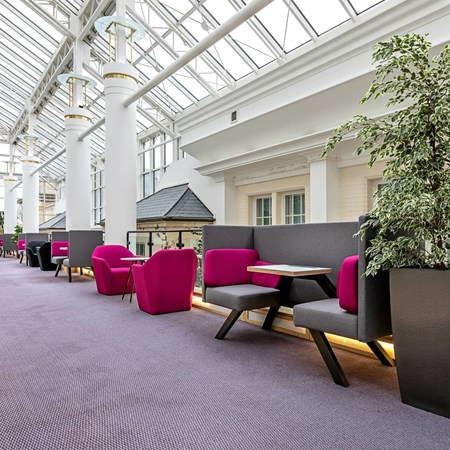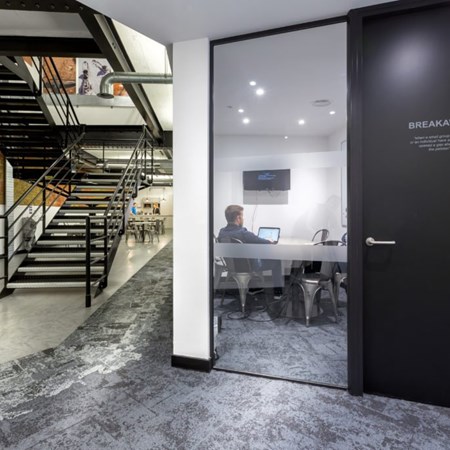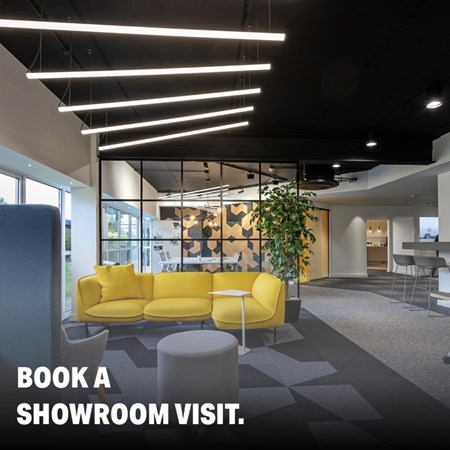
DO YOU NEED QUIET ZONES OR FOCUS ROOMS IN THE OFFICE?
WHAT IS AN OFFICE QUIET ZONE?
The Office Quiet Zone or Focus Room is a necessary part of the modern office. Especially if you are adopting hybrid working or agile working. It could be a small room that is put aside for quiet focused work. Alternatively it could be a specific zone or area in the office that is designated as a quiet zone. This creates a space that allows work that needs concentration and quiet to achieve a good result.
WHY DO YOU NEED AN OFFICE QUIET ZONE OR FOCUS ROOM?
A common complaint from office staff is that they can’t concentrate and don’t have anywhere quiet to work. General background noise, office chat and also other colleagues interrupting for some reason can stop people working. Even if an open-plan office works well most of the time, most people will have occasions when they need to work somewhere quiet.
Recent studies have also shown that the typical cellular individual office space is unoccupied around 77% of the time. Also many companies are recognising that this is unsustainable. Consequently there is a trend to replacing the traditional managers office with a Focus Room or Office Quiet Zone. These can then be used by any member of the team including the manager.
SPACE IS ALLOCATED ACCORDING TO ACTIVITIES RATHER THAN STATUS.
The trend is for office space to be allocated according to tasks to be done rather than status. The facilities manager of a large corporate said that “We are trying to get away from offices by status. Most of the directors are now in open plan but they have access to private space.” This thinking is driving the inclusion of the focus room or office quiet zone within the typical office.
THE OFFICE QUIET ROOM IS A MULTI-FUNCTIONAL SPACE
The Office Quiet Zone or Focus Room is a multi-use space that can be used for focused work. It can also be used for one-to-one meetings or to take private phone calls. To maximise the use of the room it is recommended that it is equipped with network connection and power, a projector or LCD screen and also a whiteboard, flipchart or smartboard. For most companies it is also very useful to have video-conferencing facilities for Zoom or Teams meetings.
PROS AND CONS OF QUIET ZONES OR FOCUS ROOMS
ADVANTAGES
- Can be valuable multi-purpose spaces
- Great for confidential phone calls
- Can also be used as quiet working space
- Provides a overflow capacity in busy times
DISADVANTAGES
- Can be a waste of space if poorly designed
- Needs a good cleaning rota in the post-Covid world

QUIET ZONE DESIGN CASE STUDIES
Also take a look at this interesting CASE STUDY for SportPursuit in London. This industrial style office design and refurbishment included a range of different work areas with the design. In addition to the main office area they wanted to have quiet working areas, touchdown areas and informal meeting spaces. As in this case study you find that a number of spaces can be designed as multi-use areas.
Many office design schemes include quiet spaces or focus rooms and some other case studies that give examples are below.
AERIAL DIRECT in Segensworth, Fareham, Hampshire.
FDS in Whiteley, Hampshire
OXFORD UNIVERSITY PRESS in Oxford
A particular product that we feel works very well as a quiet space is the TOOtheLOUNGE BOOTH by AGILITA.



